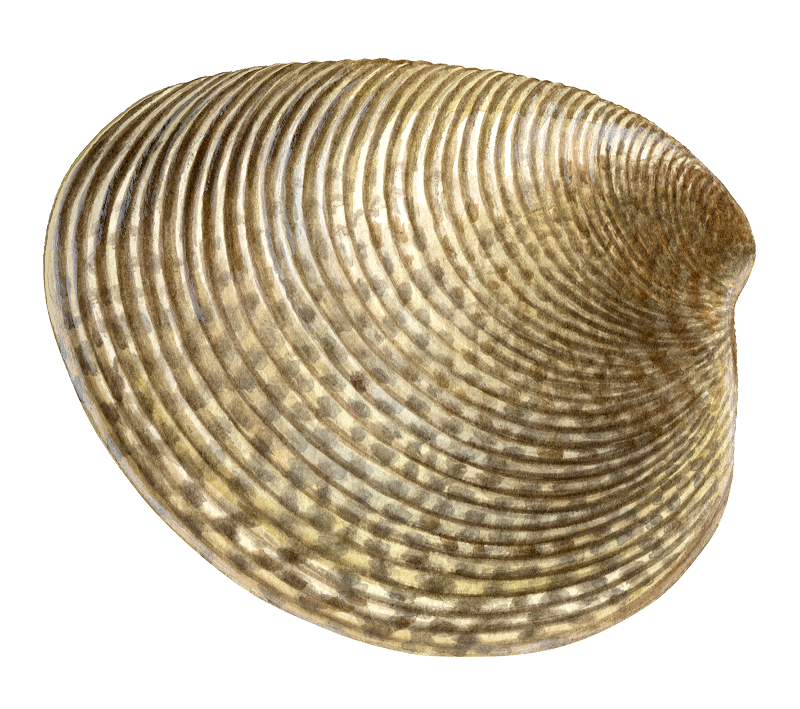Status
Vongole Clam
Katelysia scalarina

Illustration©R.Swainston/anima.fish
2023 Vongole Clam Status
| Stock Status | DEPLETED | ||
| Stock | Ansons Bay Vongole Clam Fishery | ||
| Indicator(s) | Biomass estimate, recruitment | ||
There is no longer a fishery for this species in Tasmania.
A rapid and extreme decline in abundance of Vongole at Ansons Bay was apparent in 2014, with the 2015
biomass estimate of 27 t being 13% of the peak recorded biomass of 202 t in 2002 (Keane and Gardner, 2018). The most probable cause for the population collapse appeared related to both the low levels of pre-recruits observed in the 2006 – 2017 surveys, exacerbated by sporadic events of high natural mortality and cumulative fishing mortality of recruited Vongole (Tarbath and Gardner, 2015). It was noted during the 2015 survey that the density of non-commercial bivalve species (e.g., Katelysia rhytiphora, Paphies sp., Callista sp.) was remarkably low compared with previous years, indicating that an environmental factor had increased mortality of Vongole and other bivalves, rather than fishing mortality (Tarbath and Gardner, 2015). The fishery was closed to commercial catch in 2015 following the stock decline.
In 2018 biomass in the Vongole Clam fishery was estimated at 23.42 t, 12 % of its peak, based on quadrat counts that are extrapolated across the defined fishable beds (Keane and Gardner, 2018). This stock was classified in 2015 as environmentally limited on the basis of severe declines in biomass associated with a flood event (Tarbath and Gardner 2015).
The most recent 2021 estimate of biomass available to the Ansons Bay Vongole Fishery was 13.22 t (95% CI of 10.52 – 15.92 t), a level that is 6.5 per cent of the peak biomass recorded in 2001. The decline of the stock from 2015 onwards is likely attributable to a combination of mortality of Vongole as a result of extreme rainfall and flood events in the north-east of Tasmania in 2014, followed by ongoing recruitment failure since that time (Keane 2021).
Market pressures had also contributed to a decline in commercial Vongole catch. The expansion of supply of product from other sources, such as New Zealand, into mainland markets and subsequent falls in price reduced the economic profitability of the Ansons Bay Vongole Clam Fishery. This economic impact was compounded by business impacts of prolonged closures from harmful algal blooms and the costs associated with monitoring and testing.
The above evidence indicates that spawning stock biomass is likely to have been depleted to the point where average recruitment levels are significantly impaired, primarily as a result of substantial environmental impacts. Despite fishing having ceased in 2015 there has been no sign of recovery. All licences have been surrendered and the fishery ceases to exist.
On the basis of the evidence provided above, the Ansons Bay Vongole stock is classified as a depleted stock.
Learn more about what each stock status classification means on our Stock Status Classifications Information Page:



